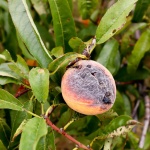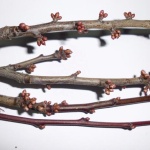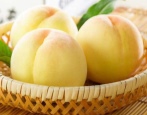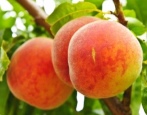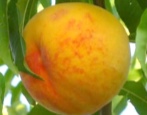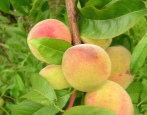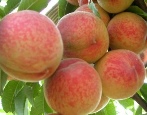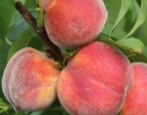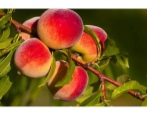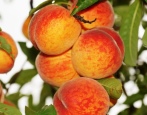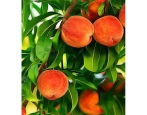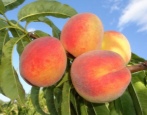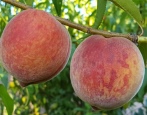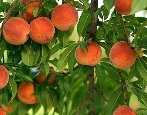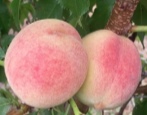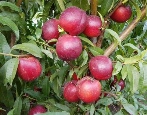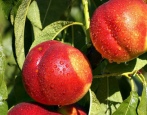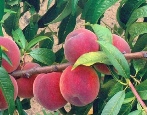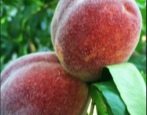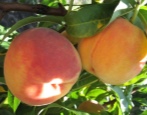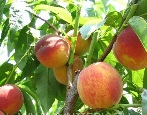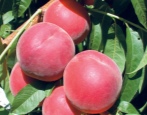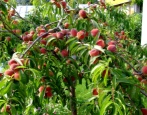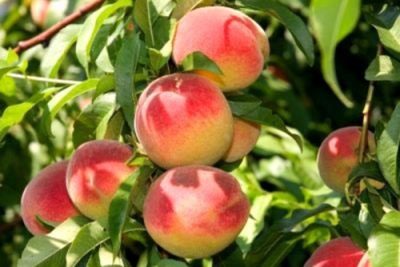
- Authors: Ukrainian Research Institute of Horticulture
- Growth type: medium-sized, low-sized
- Ripening period: mid-early
- Appointment: table, for fresh consumption, for canning, for making juices
- Yield: high
- Early maturity: begins to bear fruit 4-5 years after planting
- Bone size: medium
- Separability of the bone from the pulp: not separable
- Winter hardiness: high
- Disease and pest resistance: stable
During the Soviet years, attempts were made to obtain peach varieties for cultivation in the north of Ukraine, as well as in the Central region and central Russia. Scientists of the Ukrainian Institute of Horticulture made a great contribution to the development of such varieties. Until now, one of the most winter-hardy varieties is considered to be created in those days - the Novoselkovsky peach.
Breeding history
Novoselkovsky was bred at the Research Institute of Horticulture of the Ukrainian Academy of Agrarian Sciences by the famous pomologist A.P. Rodionov. The frost-resistant variety Kievsky early was taken as a basis (it was created by Rodionov in collaboration with other scientists in 1939) and an unknown variety. In the village of Novosyolki, Kiev-Svyatoshinsky district, Kiev region, today there is one of the oldest (formed in 1930) national experimental fruit stations. In honor of this settlement, the variety got its name.
Description of the variety
Novoselkovsky is a winter-hardy mid-early peach with good immunity to pests and diseases, in particular, to curly leaves. Forms a low and medium height (up to 300 cm) tree with a rounded crown. Sweet-sour fruits are small, medium-pubescent, creamy surface with ruddy sides at full ripeness.
Fruit characteristics
These peaches are not distinguished by their outstanding dimensions: their average weight is only about 50-60 g, they can reach 75-80 g when the ovaries are rationed. The shape of the fruit is round or slightly elongated, with a distinct "abdominal seam". The peel is thin, velvety, white-creamy with a greenish undertone. As it matures and from exposure to the sun, the shade becomes more golden and fills with blurred stripes of a soft pink-red blush.
The pulp of medium density will be tender in the most ripe fruits, but the medium-sized stone is still difficult to separate.
Taste qualities
Novoselkovsky belongs to the table varieties, although the purpose may be universal. You can use fresh peaches, dry, prepare compotes, preserves, jam. The taste is balanced, moderately sweet with sourness. Tasters' assessment: 3.8-4 points.
Ripening and fruiting
The variety belongs to medium early, the fruits ripen en masse by the end of July - early August (in Ukraine and the south of the Russian Black Earth Region). This is about a week and a half later than the fruiting of Kievskiy early peaches.
A signal harvest from single fruits can be obtained already for 2-3 years of a tree's life, but only a 4-5-year-old seedling will bear fruit fully.
Yield
Novoselkovsky is not used for industrial cultivation (the commercial quality of the fruit is not suitable), but is planted on personal garden plots. For individual cultivation, it is considered to be quite high-yielding.
The yield is influenced by many factors, such as the climatic zone and weather conditions during flowering and ovary formation. If during this period it is cool and there are prolonged rains, then there will be few ovaries, and the yield indicators will decrease.
Growing and caring
In areas of risky farming, this peach is best planted in the spring, in April-May.Choose a sunny place protected from wind and drafts on a flat area or a small hill, without shading. Loamy loamy soil with low to medium acidity is preferred.
The variety is unpretentious: it responds well to seasonal feeding (organic, nitrogen and potassium-phosphorus) and regular watering (minimal during the ripening period).
To form the ovaries, the variety requires the planting of neighbors-pollinators; the Kiev early peach is suitable for this purpose.
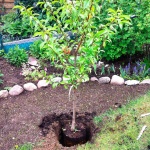
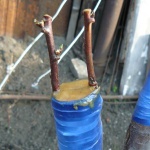
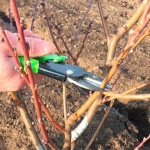
Frost resistance and the need for shelter
Novoselkovsky surpassed the variety Kievsky early in a number of indicators, which was considered a champion in frost resistance. The tree is restored, even if freezing has occurred, however, it is inferior to the leadership in the ability to regenerate the variety Donetskiy Belyi. Novoselkovsky peach wood will withstand a drop in temperature to -32 ° C, but for flower buds, the limit will be -28 ° C.
Gardeners in the Moscow region, the Leningrad region, the middle zone of the Russian Federation successfully grow this variety using shelters:
the trunk circle is mulched with organic matter;
the trunk is covered with burlap or agrofiber;
the crown is protected with spunbond.
A mobile structure made of boards and mineral wool will provide good protection against frost. Due to the small size of the tree, it will not be difficult to build such a shelter.
Disease and pest resistance
Breeders have laid in this variety a high immunity to the main ailments of fruit crops. Infrequently, it is also affected by such a common disease as a fungal infection of curly leaves.
For prophylaxis, it is necessary to inspect the tree, remove damaged branches in time, process the cuts, loosen the near-trunk zone, spray the swollen buds with a mixture of copper sulfate and lime.
Moth and aphid raids will prevent timely fungicide treatments.
